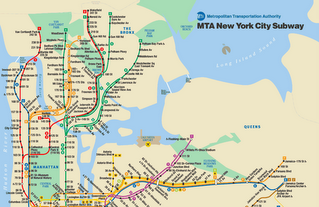 New York City’s Transit Authority was found liable yesterday by the Court of Appeals, for a trip and fall accident on subway stairs it neither owns nor controls.
New York City’s Transit Authority was found liable yesterday by the Court of Appeals, for a trip and fall accident on subway stairs it neither owns nor controls.
A 4-1 majority of the high court adopted a 101-year old “Schlesinger rule” that imposes on common carriers a duty to provide safe ingress and egress on approaches that are “constantly and notoriously used.”
The court wrote:
Where, as here, a stairwell or approach is primarily used as a means of access to and egress from the common carrier, that carrier has a duty to exercise reasonable care to see that such means of approach remain in a safe condition or, where appropriate, to take such precautions or give such warnings as would protect those using such area against unforeseen danger.
…
In the case before us, the evidence at trial was sufficient to establish that the stairway in question was used primarily as a means of access to and from the subway. Therefore, defendants had a duty to maintain the stairway or to warn patrons of any dangerous condition. So imperative is the duty to provide a safe means of access to and from the subway that such duty may not be delegated to another. Thus, even if the responsibility to maintain the stairway resides in another entity, defendants may not avoid their responsibility “to at least provide against injury to its passengers by erecting such barricades, or giving such warning, as [would] guard against accidents.
The decision in Bingham v. New York City Transit Authority is here.